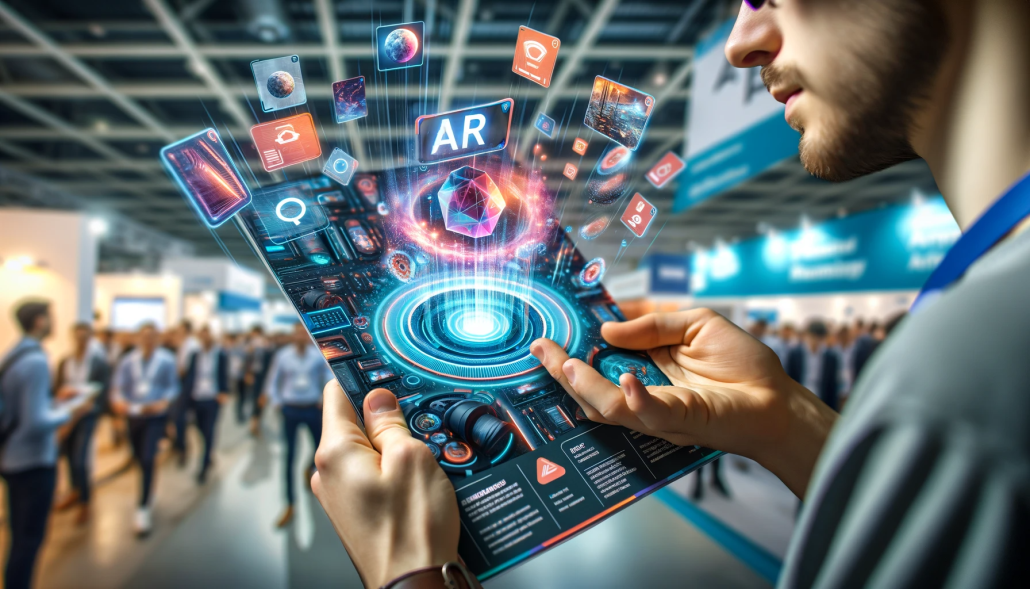In the evolving landscape of digital marketing, integrating Augmented Reality (AR) into campaigns has opened up new frontiers for consumer engagement and brand storytelling. This post explores the transformative potential of AR in revolutionizing traditional marketing strategies.
Augmented Reality enables brands to create immersive experiences that go beyond the conventional, fostering a deeper connection with their audience. Let’s delve into the effectiveness, implementation, and future outlook of leveraging AR in your marketing endeavors.
Embracing Augmented Reality for Marketing Innovation
The integration of Augmented Reality into marketing campaigns represents a shift towards more interactive and personalized consumer experiences. AR allows users to experience products and narratives in a uniquely engaging way, thereby enhancing brand recall and affinity.
From virtual try-ons to interactive storytelling, AR brings products and services to life, enabling consumers to interact with them in their environment. Such an innovative approach can significantly increase conversion rates and customer satisfaction.
Moreover, AR campaigns offer measurable insights into user engagement and behavior, providing valuable data for refining marketing strategies and understanding consumer preferences.
Successful implementation of AR in marketing not only captivates attention but also sets a brand apart, showcasing innovation and forward-thinking.
Strategies for Implementing AR in Your Campaigns
Introducing AR into marketing requires a blend of creativity and technical understanding. Define your campaign goals and target audience to tailor AR experiences that resonate and add value.
Utilizing AR platforms and tools, such as ARKit by Apple or ARCore by Google, can simplify the development process, allowing for the creation of custom AR experiences that integrate seamlessly with existing marketing channels.
Partnerships with AR development specialists can also facilitate the integration of advanced AR features, ensuring a smooth and impactful user experience.
Case Studies: Augmented Reality in Action
Many brands have successfully harnessed the power of Augmented to create memorable campaigns. For instance, IKEA’s AR app allows customers to visualize how furniture would look in their homes before making a purchase, significantly enhancing the shopping experience and reducing return rates.
Similarly, beauty brands like Sephora use AR for virtual makeup trials, empowering customers to experiment with products virtually, leading to more informed and satisfying purchases.
These case studies exemplify how AR can bridge the gap between online browsing and physical interaction, providing a tangible sense of the product or service.
Overcoming Challenges
While the benefits of AR in marketing are clear, its implementation comes with challenges, including technical limitations, high development costs, and the need for consumer education. Overcoming these obstacles requires a strategic approach, focusing on scalable solutions and clear communication about the benefits of AR interactions.
High-quality content and a user-friendly interface are essential for a successful AR campaign, ensuring that the AR experience is accessible and engaging for all users.
Measuring Success and ROI
Assessing the impact of AR campaigns involves tracking engagement metrics, conversion rates, and customer feedback. These indicators offer insights into the effectiveness of AR experiences in achieving marketing objectives.
Additionally, analyzing user behavior and interaction patterns can inform future AR developments, optimizing campaigns for better performance and ROI.
Future Trends in AR Marketing
As technology advances, the potential for Augmented Reality in marketing continues to expand. Future trends include even more personalized AR experiences, integration with social media platforms, and the use of AR for sustainable and socially responsible branding.
Staying ahead of these developments will require continuous innovation and experimentation, but the rewards for early adopters can be significant, marking a new era in digital marketing.
Conclusion: The Augmented Advantage
Augmented Reality offers a groundbreaking way for brands to connect with their audience, transforming traditional marketing tactics into immersive, interactive experiences. Its ability to combine the digital with the physical world opens up endless possibilities for creative and compelling campaigns.
By strategically implementing AR and embracing its challenges, marketers can achieve a competitive edge, crafting experiences that captivate, convert, and endure in consumer memory. The future of marketing shines bright with the prospects of Augmented Reality as a central player.
In summary, Augmented Reality in campaigns not only enhances customer engagement and satisfaction but also provides unique insights into consumer behavior. As we move forward, leveraging AR will be key in staying relevant and innovative in the ever-changing landscape of digital marketing.


